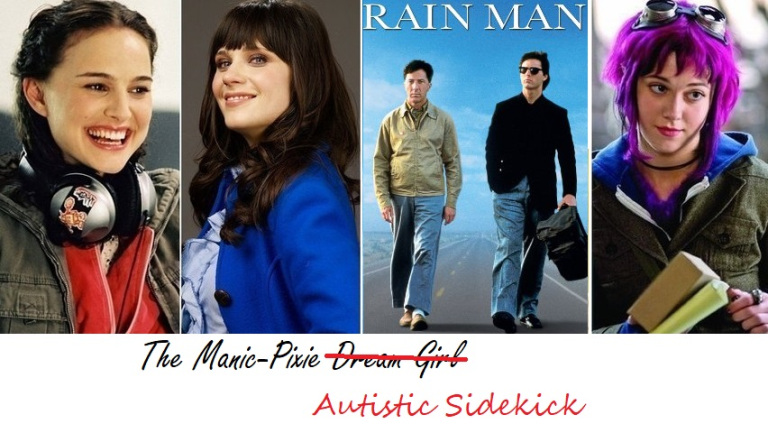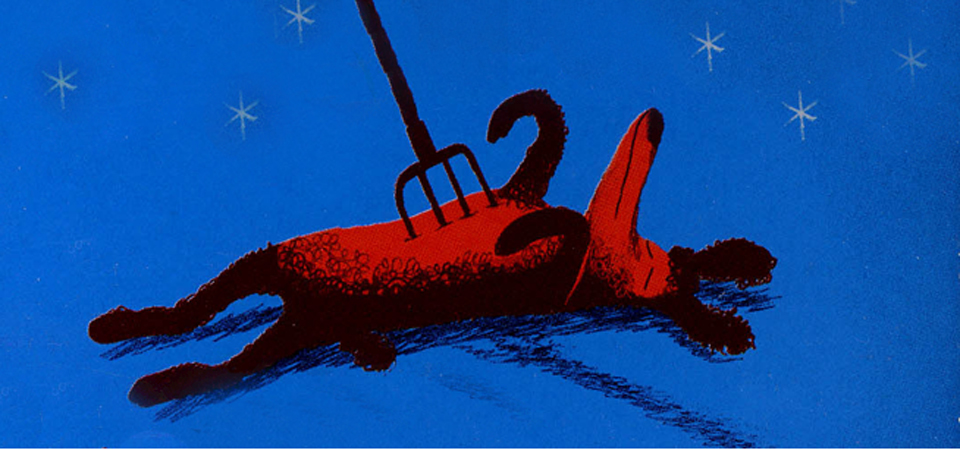So, I took a Disability and Society class in college and recently was going over some of my old papers. This is a modified version of my final paper (yes, I got an A!), and I felt like it was appropriate on this blog. The prompt was to analyze something related to our field of study through the lens of topics we’d covered in class, how it effects society, and how we intend to apply things we’ve learned to our fields when we graduate. So, as an English/Creative Writing major, I chose to write a paper about disability in fiction (mental and physical), the impact it has, and how it will influence my writing. Hope it’s still interesting!
Disability in Fiction: An Analysis of Disabled Characters, Tropes, and the Impact They Have
Fiction in novels is a mirror of our real-life world, reflected back at us for multiple reasons. Many times, it provides escapism via ‘perfect’ characters, or at least, characters with very few flaws. Main characters are almost always attractive, young, and often athletic enough to face down an ogre. In modern times, visibility has become a more prominent component of many genres of fiction. This means portraying all sorts of characters as main characters to provide people, ranging from children to adults, role-models who are like them: female, dark-skinned, of certain religions, LGBT, etc. The minority group that usually gets the least amount of visibility is the disabled. Even when there is some visibility, the manner in which it is written is often lacking. But why does the quality and style of a character matter in regards to visibility, and what role does it play in our society?
Being well-written is without a doubt the biggest key to the success of visibility. If a disabled person only ever sees themselves portrayed in novels as helpless, victimized, inspiration for a more important character, or (in a shocking number of cases) evil, they might have a harder time picturing themselves as being capable of success or strength of any kind. Similarly, if disability is treated a certain way in fiction and that is what society sees, then it can affect the way parents, caretakers, and people in general interact with disabled people. That is why it is vital to have fully developed, well, and accurately written disabled characters in fiction: to increase the chances of success, raise the quality of treatment, and elevate the self-esteem of the disabled community.

Visibility, or rather, a lack-there-of has impacted me in a personal way that is relevant to this topic. For a long time, I copied in my own writing what I thought was simply the style that was required for writing fantasy to the best of my ability, and came out with a decently written novel. The remarks I received were that my world-building was interesting and my characters were generally well done… except for the main protagonist. There was something off about her, but no one could put their finger on what that something was.
After a psychologist realized I was likely on the autism spectrum, I finally decided to try writing a completely unrelated short story from my own perspective. The result was the difference between night and day. My writing was suddenly engaging, my character interesting, and I was told that no one in my class had ever read something with a voice like my character’s before.
The reason I had not written like that earlier was simply because I didn’t know I was allowed to. I had not realized that the way most books are written in actually represents most people’s thought processes, I had assumed it was a stylistic choice to cut down to the bare bones for the sake of story-telling. In a way, I did not know I existed. There is very little visibility for neurologically atypical/diverse main characters in novels. They are side characters – if they are there at all – who are there to teach the main character patience, understanding, responsibility, or some other desirable trait. For more on this subject, see my blog post about the “Manic Pixie Autistic Sidekick” here: https://somegirlwithabraid.wordpress.com/2017/09/02/the-manic-pixie-autistic-sidekick/.

The modern movie Rain Man starring Tom Cruise and Dustin Hoffman is a popular example. Raymond, the autistic brother, doesn’t exist for the sake of his own story; he exists so that Tom Cruise has an opportunity for character growth. In more troubling examples, sometimes mentally disabled characters are evil or misguided villains stereotyped as mad-scientists. This is the case commonly in comic books, but also in Gothic horror such as Dr. Jekyll and Mr. Hyde’s chemically created schizophrenia. Proper visibility would involve a main character accurately portrayed with their mental disability, not sensationalized, villainized, or marginalized. If I had seen accurate visibility of neurodiversity in fiction, I would have been able to see myself in a different way, understand myself better, and perhaps have found success sooner.
For this paper, I will focus on both the mentally and physically disabled characters in a select number of novels and address the strengths and the problems with each portrayal. These novels are The King’s Damosel by Vera Chapman, Eon: Dragoneye Reborn by Alison Goodman, and The Curious Incident of the Dog in the Nighttime by Mark Haddon – with some additional comments from the movie Quest for Camelot which is related to Chapman’s work as well as The Lost Years of Merlin by T. A. Barron. Afterwards, I will reflect on these novels from the perspective of my own work in progress manuscript, Castle of the Unwanted. In The King’s Damosel one of the main characters is a blind hermit man, in Eon the lead character is a girl with a disfigured leg, and in Curious Incident the main character is a boy allegedly with Aspergers. I will research each of these disabilities from the perspective of online activists, blogs, and interviews with and by people who live with these conditions and compare the real-life equivalent to their fantastical counterpart. Each case is unique, with some strengths, and with some serious flaws that need to be addressed if accurate visibility is to have a future in fiction.

In The King’s Damosel by Vera Chapman, the disabled character is the second love interest of the main protagonist, a girl named Lynette. He is a blind man living in a cave named Lucius. Even his name is meant as almost a joke, or perhaps irony:
“‘I am called Lucius,’ he said.
‘Lucius? That means – of the light?’
‘Yes, although I have long lived here in the dark. My mother named me Lucius when we first came into the dark. She named me for the light she hoped we would both see…’” (Chapman 115)
Part of the reason that Lynette falls for him is that she’s glad he can’t see her, as she feels she is too plain and that those who can see her don’t like her.
“To have him see her! No, it would be unbearable. To see the disappointment in his look, to have him turn away from her when he knew the truth – oh no.” (Chapman 141)
This is an interesting comment for her to make, implying that part of what she likes about Lucius is the fact that he is disabled, because it means she can hide herself, yet she can also be more herself than with others around him. Their entire romance separates this particular novel from the other novels to be discussed, as romance is something not commonly found in connection with disabled characters, who are often portrayed as asexual beings. However, an exception seems to be made for the blind, and the idea of falling in love with someone regardless of their physical beauty is a trope that has become romanticized. This is not necessarily a bad thing in its influence on society, but it is a repetitive trope nonetheless.
The main thing to focus on with Lucius’s character is what happens at the very end of the novel. Lucius is sick and dying, and the only way to cure him is through the magic of the Holy Grail, which would essentially grant him a healing wish. Lynette goes on a quest to get him the grail and succeeds, bringing the life-saving grail back to him in order to heal him, so that they can live a long life together. Instead, Lucius gives up his life by wishing instead for his vision so that he can see her before he dies. And, inevitably, he does die as a result, after proclaiming over and over how beautiful she is now that he can see her.

This plays into the trope that one is better dead than disabled as Lucius literally chooses to be able-bodied over having a long healthy life with the woman he loves. The book portrays this as if it is supposed to be a romantic gesture of some sort, that he has given up life so that he can see his beloved’s face, but the impression given is that his life as a blind man is not worth anything, so he might as well give it up so that he can be able-bodied for a short while, even if he had someone who loved him and wished to live a long happy life with him:
“But if only he would choose life – just as he was, without sight! How gladly she would devote the years of her life, as many as might remain, to caring for him, nursing him, being his eyes. Perhaps – oh, perhaps there might be children.” (Chapman 168)
The situation also plays on the trope of magically healing a disabled protagonist in fantasy. An interesting note is about a mediocre children’s cartoon musical movie based very, very loosely on Chapman’s novel called Quest for Camelot. While almost all of the story is changed (the book handles very adult themes such as rape and torture which simply are not fit for a children’s cartoon), Lucius’s on-screen counterpart Garrett is also a blind hermit, living in a forest instead of a cave. At the end of the movie, there is a magical deus ex machina moment that heals and fixes everything that is wrong with all the characters in Camelot. This includes everything from healing a broken arm to reversing mutation inducing curses from a witch’s evil potion to killing the main villain of the story.

Interestingly enough, even though this magical occurrence is shown to be capable of healing acquired injuries like a broken arm (Garrett was blinded in an accident, not born blind), Garrett is still blind after it occurs, and is show riding off into the sunset with Lynette’s on-screen counterpart named Kayley after they are both knighted. It is almost the exact opposite of The King’s Damosel’s ending, and frankly the better written ending – quite a surprise considering some of the other silliness in the movie. Quest for Camelot provides a role model for blindness, and one who is not rewarded by having his disability removed. Instead, it is simply a part of him, and he is perfectly capable of having a fulfilling, happy life with his acquired disability to the point that the magic decides not to heal him (said magic is shown in another instance to be sentient and aware of living creature’s preferences when it first separates then un-separates conjoined dragon twins). This is an interesting choice on the part of the movie’s writers because they easily could have returned Garrett’s eyes as an end-of-arch reward for his bravery through the movie, yet purposefully chose not to. Perhaps they, unlike Vera Chapman, were more aware of the need for representation in a positive light.

There are many other tropes specific to blindness found in fantasy – the most popular being blind prophets or seers, playing into the idea that having one of the five senses dulled or lost completely leads to hyperawareness in other areas. In fantasy, that can lead to superpowers, almost always associated with being able to see something other characters cannot. This is the case in another fantasy book series called The Lost Years of Merlin by T. A. Barron. This book blinds the main character, the young version of Merlin named Emrys, early on in the first of the six book long series and yet soon afterwards he discovers a magical second sight that all but eliminates his blindness: another case of ‘if you are good, you are not disabled’. It also essentially negates his disability, in a similar way as the comic book character Daredevil: Emrys is a disabled man whose superpower/magical ability is that he is not disabled, making the inclusion of the disability essentially pointless.
While these specific books are slightly more obscure and therefore difficult to find commentary on, the blind community has had several things to say about blind characters in general, especially in regards to more popular characters such as Matthew Murdock in Daredevil and Geordi La Forge in Star Trek: The Next Generation – both TV show characters whose blindness is compensated for either by superpowers or technology. The concern about blind characters seems to be not that they aren’t interesting heroes, but that they aren’t ordinary enough.

“My concern is that characters are portrayed in such a way that the only way they can be competent is if they are somehow exceptional, have some kind of superpower or had some kind of technology that enabled them to see.” – Dr. Betsy Zaborowski. “… What I would really like to see is a blind character in the movies and television just leading a normal life, where his blindness is not the whole center of attention. Holding a job, and having fun, living a full life.” (abcnews.go.com)
Another concern voiced by the same doctor refers to the way blind individuals are seen as having heightened senses: “One of the greatest misconceptions out there is that blind people’s other senses are somehow enhanced. That is not true. We tend to use our other sense more but there is no evidence our other senses are greater than a person with sight.” (abcnews.go.com)
Obviously, to this blind individual, realism is key, as is accurate representation. Garrett/Lucius would be the more likely of the characters to meet her approval in that manner, with the exception being that his senses are portrayed as heightened, and in the movie he is a skilled fighter, making him too ‘superhero-y’. The character of Emrys certainly falls into both those categories, providing both an inaccurate representation of a blind boy as well as relying on the ‘if you are a good person, you will be healed’ trope.

Magical healing is a much more prevalent theme than anything showing a disabled person having a happy life when it comes to fantasy novels. This is the case in Eon by Alison Goodman. The premise of the novel focuses much more on the main character’s gender and the role of gender in the society rather than the fact that she, a girl named Eona, has a hip that was crippled in an accident/attack. Because of this, she walks with a severe limp. Eona lives in a society that is highly patriarchal, disguised as a boy named Eon. In the beginning, she has been chosen to compete for the magic granted yearly by one of twelve dragons, and part of the ceremony to prove her worth involves a series of physical martial-art style stances, of which she is not capable of performing one of the more difficult ones. Fortunately for her, she finds a legal precedent to change the one stance she cannot do to a simpler one, and is allowed to take part in the challenge. The people around her view this accommodation as a sort of annoyance. This can easily be read as a reflection of the discomfort, distain, and stigma disabled people face in our own real society. People flat out insult her because of her disability:
“He studied me for a moment. It was like being staked out, naked and helpless, under the burn of the sun.
‘Brannon’s cripple,’ he finally said. ‘Be ashamed. You rob an able-bodied boy of his chance.’” (Goodman 76)
This moment is actually a valuable one, as the reader is meant to empathize with Eona rather than the man insulting her. In putting any able-bodied readers on the receiving end of vitriol like that, the reader will be less likely to spit it themselves in real-life.

As the story progresses, Eona is chosen by a long lost thirteenth dragon to gain power, and she suddenly has much more respect than she ever did as a disabled individual. Her disability still gets in the way, as she has difficulty escaping a man who intended to rape her. However, in other instances, she performs admirably, and not ‘just for’ someone with a disability, as some might put it. She breaks into a secret vault to steal a much-needed object, uses her intelligence to solve the mystery of a code none of her peers could, copes with grueling studies, labor, and physical demands, and forms important relationships with all sorts of people, including the heir to the throne and a transgendered court lady. In short, Eona is a complex character defined by her struggles, the society around her, and her own determination and humanity.
But like the case with The King’s Damosel, the end of the book is where things become slightly problematic.
“Clutching together the remnants of the tunics, I started toward the gate. Even as I took the first step, I knew something fundamental had changed; my bad hip was flexing into a new stretch of muscle and sinew. No pain. No awkward gait. I stopped, disoriented, then stepped forward again. A longer stride that should have buckled into a limp. But it was straight and true. I yanked back the edge of the tunic and touched the pale skin over my hip. It was smooth. No scar. I was whole again. A laugh broke out of me; my dragon had healed me too.” (Goodman 522-23)
Through accepting herself as a female and saying her true name, Eona rather than Eon, the magic of the dragon she is bonded to heals her body. This is unnecessary. She had achieved so much and gotten so far with her disability, and yet her reward is to have it removed. As mentioned earlier, this is the trope of magical healing. This has the potential of being extremely damaging to society’s psyche as it not so subtlety indicates that Eona’s sort of physical disability is something good people do not have or, at least, do not have for long. When abled-body-ness is grouped together with goodness, the logical conclusion is that those who are not able-bodied are bad in some way, that they’re being punished or haven’t repented for something or other. In Eona’s case, she was a very self-hating, poor individual with few friends. By the time she reached the point where she was cured of her disability, she had accepted herself, gained friends, and had more money/luxury than she knew what to do with, in addition to performing good feats. It is as if the book is telling us that working towards goodness and self-acceptance will magically heal disabilities when in reality that is not the case.

The scary fact is that some people believe this, even though there is no empirical evidence for magic in the real world. People believe that having a disabled child is a god punishing them for making fun of a kid in a wheelchair when they were younger. People believe that those with certain mental illnesses are inherently bad people not to be around. They avoid looking at or talking with people who have visible disabilities as if they had a plague or something contagious. Books like Eon present an opportunity to show a disabled main protagonist as a full human being, with good traits and bad traits just like anyone else, and potentially unrelated to their disability.
Eon’s disability could have been a fantastic representation to a little girl with a physical disability, to show her that someone like her who maybe uses a walker can be the heroine of a fantasy story. Instead, it shows her that even if the heroine is disabled, the fact that she is a heroine means she will not remain disabled. If that little girl never learns to walk like an able-bodied person, the book tells her that she is simply not the heroine of her own story because she hasn’t been healed, or that she is not good enough to deserve healing.

The last book to be discussed is The Curious Incident of the Dog in the Nighttime by Mark Haddon. While not fantasy like the other two novels, it is still a fiction piece – and one which has become infinitely more popular than either The King’s Damosel, The Lost Years of Merlin, or Eon. It has been hailed by some as textbook on Aspergers, and some people even claim that it helped teach them how to interact with people on the autism spectrum. This is terrifying. Part of the problem is that some of the problematic aspects of the book are subtle, and in being so are possibly more damaging than something blatantly offensive because the reader doesn’t realize what they may be internalizing by reading the novel until it’s too late, or perhaps even never.
The main character whose perspective the narrative is told from, is Christopher Boone, a teenage boy with an unspecified mental/social disability. His character comes across like someone googled ‘What are Asperger’s syndrome’s symptoms?’, took the first list they found off of the horrible organization Autism Speaks, and made a character based off of that. It reads like a neurotypical person trying to understand the thoughts of a neurodiverse person rather than the actual thoughts of someone on the autism spectrum. This is in fact similar to the reverse of the personal experience I had in my own writing – neurotypical people reading my work could tell something was off, that maybe I was not really one of them but rather was pretending. With Haddon’s work, neurodiverse people can tell something is off, that he is pretending. Instead of creating a real character, Haddon instead created another “Rain Man” – aka a stereotypical portrayal of a white male autistic savant mathematician.
You can read more about my thoughts on this particular book and the harmful impact it has here: https://somegirlwithabraid.wordpress.com/2018/07/07/the-curious-incident-of-the-curious-incident-of-the-dog-in-the-nighttime-a-literary-review/

Complimenting my own thoughts on this book is a review I found online by Elizabeth Bartemess that hit the nail on the head in discussing this issue:
“Abuse, bullying, and casual insults are unfortunately common experiences for autistic people, and it isn’t inaccurate of Haddon to portray them. But the way he portrays them is terrible. By showing Christopher as not noticing or responding to insults and abuse, he suggests that being cruel to autistic people isn’t that bad. Readers who see an autistic person being mistreated are less likely to stand up for them if they believe they won’t even notice. By showing him being treated badly by multiple people he meets in public, Haddon sets the expectation that this kind of treatment is universal, inevitable, and normative. These interactions could have been used to show non-autistic characters modeling effective support skills, but were not.
[…] Summary – Curious Incident portrays the autistic protagonist as unsympathetic, elitist, violent, and lacking empathy. It portrays abuse, abandonment, and gaslighting as normal (or even justified) response[s]. The book normalizes abuse, presents the autistic protagonist as responsible for it, and suggests that he is not harmed much by it. This happens towards autistic people in real life, too, and it is very harmful.” (disabilityinkidlit.com)
Some interesting facts I uncovered while researching the author’s understanding of the condition he was writing about came to light in the form of direct quotes from Haddon himself. While he originally described Christopher as an Aspie, even putting “Asperger’s” on the cover of his book as a description, he has since retracted this and has had this to say about the subject of autism:
“I have to say honestly that I did more research about the London Underground and the inside of Swindon Railway Station, where some of the novel takes place, than I did about Asperger’s syndrome.”
“I know very little about the subject. I did no research for Curious Incident (other than photographing the interiors of Swindon and Paddington stations). I’d read Oliver Sack’s essay about Temple Grandin and a handful of newspaper and magazine articles about, or by, people with Asperger’s and Autism. I deliberately didn’t add to this list. Imagination always trumps research.”

Except that imagination does not trump research when an author is addressing something so based in the real world, that affects so many real people. Certainly, imagination is key if creating a fantasy world where rivers float through the sky and mountains are inhabited by orcs, but not when describing a condition many people actually have. Such a work by its nature requires extensive research or personal experience, or it risks creating harmful work full of information that will harm people and society in real-life with its influence. Part of the harm taken from this book is that despite Mark Haddon’s admission that he knows very little on the subject, this book is being used as a teaching tool. One doctor, Dr. Alex McClimens, read Curious Incident and went so far as to say, “The magnificent essay in communication is compulsory reading for anyone with the slightest interest in autistic spectrum disorders.” Except that it should not be, for all the reasons listed above.
Part of the reason I chose this book to discuss is to show an example of inaccurate representation. While it is harder to inaccurately represent a blind person or a girl with a non-functional leg, because they can still be neurotypical people who have the same thoughts as any able-bodied person would in those situations, it is very easy to misrepresent mental illness/conditions of any sort. This is especially the case when the representation is also the point of view of the story being told by a neurotypical author. Accurate representation is vital to the visibility of the neurodiverse community. Without it, it is worse than erasure or absence. Just like it is good for a little girl who walks with a cane because of a birth defect to have a potential hero that mirrors her in Eon, it is good for autistics to have a hero that they can see themselves in as well, if only to know that their internal voice is one that exists in the world and is a valid voice.

This leads to the reason I chose each of these books. While I am interested in all the specific topics, two of these books were chosen in the interest of research for my own fantasy novel manuscript in progress of writing this paper: Eon and Curious Incident. As I stated in the beginning, my main character, a fifteen-year-old girl named Crimson, is a mirror of my own mind: an autistic mind. Curious Incident showed me how vital accuracy and avoidance of harmful stereotypes are when writing a neurodiverse character. My Crimson strives to be a complete human being: her father does the best that he can for her. People do not regularly abuse or insult her, and the ones that do are clearly shown as being in the wrong and affecting her. She has her differences, but I try to make them endearing or at the very least interesting and realistic. She develops friendships, and eventually even a romantic relationship. This is something I find lacking in many discussions about autistics, the idea of romantic and sexual relationships. In many cases, autistics are viewed as being incapable or uninterested in such things, but that is not the case at all as many get married and have children. I myself am married to a wonderful neurotypical and we plan for a family in the next five years or so: proof that this stereotype is false. I hope that Crimson can be an example to any who read her as to what a human, autistic mind is really about, and that autistics are not dangerous, cruel, or undeserving of love. I also want her to be a role model for autistic pre-teens and teens to look up to as their peer, to make them feel seen.

As to Eon, I chose this novel because of Eona’s physical disability due to the fact that one of my secondary characters, a girl named Chulensa, has a similar disability. This is something I needed/need to research thoroughly and excessively as I have no personal experience with this sort of disability. The major difference between Eona and Chulensa is that Chulensa was born with her disability, while Eona acquired it. There are few examples of mobility-impaired main characters in fantasy, and what I took away from Eon (and The King’s Damosel) is that I should not under any circumstances magically cure her. I also took away that she needs to be a strong character in her own right, with a personality beyond simply being disabled. Like Crimson, I have striven to create personality traits that are relatable, relationships that are human, and a romantic relationship. She is not bitter over her disability quite to the extreme as Eona is, and her strongest personality trait is her love and devotion to traditions from her heritage, her desire to be a part of continuing them and learning all she can from her elders. She also becomes involved in a romantic/sexual relationship. Like autistic people and characters, sex and romance are not topics associated with physically disabled people. This is a hurtful presumption that needs shattering. While writing her, the most natural chemistry between her and another character ended up being with a supernaturally able-bodied female, adding several more layers of intrigue to her character which in turn add to her humanity as an individual beyond being simply ‘the disabled’ character. I feel after reading these novels that I am on the right track, but to ensure that I am I will continue to seek out fantasy which includes disabled characters of all sorts.
The world needs more positive representation of all sorts, and the most underrepresented minority of all is the entirety of all disabled communities: accurate visibility will promote their mental and social health and improve their lives by giving them fictional characters who speak with their voices. I hope to add to that growing library, and readers should strive to seek out and support other authors they find who are dedicated to accurate visibility, so that our own real-world society might continue to improve.
If you like what you’ve read, like, share, comment, and/or follow to show support! You can also find me on Facebook as Some Girl with a Braid, or on Twitter @A_F_Caldwell.

Works Cited
Bartmess, Elizabeth. “Review: The Curious Incident of the Dog in the Night-Time by Mark Haddon.” Disability in Kidlit. N.p., 2015. Web. Oct.-Nov. 2016.
Barron, T. A. The Lost Years of Merlin. N.p.: Penguin Group, USA, 1996. Print.
Caldwell, Amalena. Castle of the Unwanted. Collection of Amalena Caldwell, FL. Unpublished manuscript.
Chapman, Vera. The King’s Damosel. London: Avon, 1978. Print.
Goddard, Drew. Daredevil. Prod. Stan Lee, Kris Henigman, Cindy Holland, Alan Fine, Joe Quesada, Dan Buckley, Jim Chory, Jeph Loeb, Drew Goddard, Steven S. DeKnight, Marco Ramirez, Doug Petrie, and Kati Johnston. Netflix. New York City, New York, 2015-2016. Netflix. 16 Apr. 2015. Web.
Goodman, Alison. Eon: Dragoneye Reborn. New York: Viking, 2008. Print.
Haddon, Mark. The Curious Incident of the Dog in the Nighttime. United Kingdom: Jonathan Cape, 2003. Print.
Haddon, Mark. “Asperger’s & Autism | Mark Haddon.” Asperger’s & Autism | Mark Haddon. N.p., 16 July 09. Web. 30 Nov. 2016.
Olear, Greg. “When Popular Novels Perpetuate Negative Stereotypes: Mark Haddon, Asperger’s and Irresponsible Fiction.” The Huffington Post. TheHuffingtonPost.com, 18 Nov. 2011. Web. 30 Nov. 2016.
Quest for Camelot. Dir. Frederik Du Chau. Prod. Andre Clavel, Dalisa Cohen, and Zahra Dowlatabadi. Screenplay by Kirk De Micco, William Schifrin, Jacqueline Feather, and David Seidler. Perf. Jessalyn Gilsig, Cary Elwes, Jane Seymmour, Pierce Brosnan, Gary Oldman, Eric Idle, Don Rickless, Bronson Pinchot, Jaleel White, Gabriel Byrne, and John Gielgud. Warner Bros. Animation, 1998. Videocassette.
Rain Man. Dir. Barry Levinson. Prod. Mark Johnson. Screenplay by Barry Morrow and Ronald Bass. Perf. Dustin Hoffman, Tom Cruise, and Valeria Golino. MGM/UA Communications Company, 1988. Videocassette.
Robinson, Bryan. “Daredevil Not Quite the Blind Man’s Hero.” ABC News. ABC News Network, n.d. Web. 23 Nov. 2016.
Roddenberry, Gene. Star Trek: The Next Generation. Prod. Gene Roddenberry, Maurice Hurley, Rick Berman, and Michael Piller. First-run Syndication. 1987-1994. Television.
Stevenson, Robert Louis. The Strange Case of Dr. Jekyll and Mr. Hyde. Lincoln: U of Nebraska, 1990. Print.








